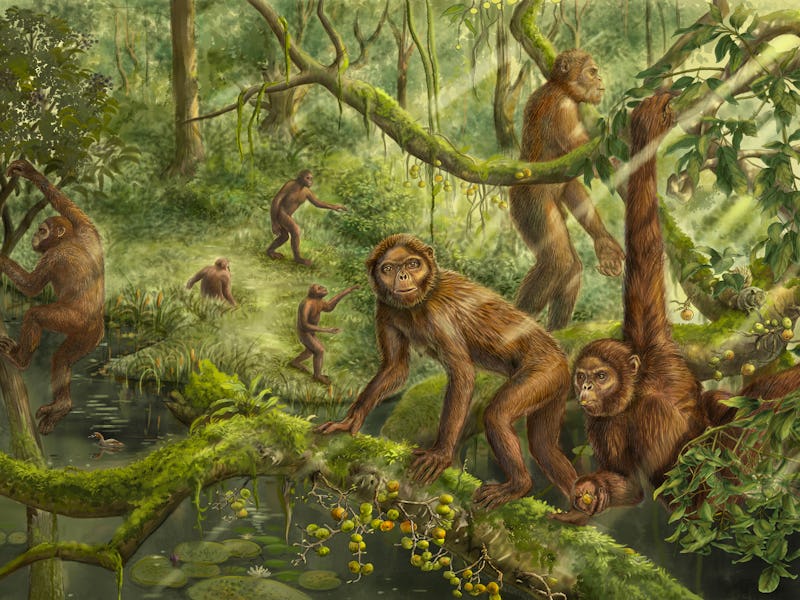A 6-Million-Year-Old Ape Ear Fossil Contains An Unexpected Clue To Why Humans Walk Upright
It’s all in the ears.

Our ability to walk upright is among the most mystifying aspects of our species. Despite biologists' best efforts, we have yet to find a smoking gun in the fossil record to explain it. But in a new paper out this week, researchers have narrowed in on a seemingly innocuous structure that might be behind it all: the inner ear of a 6-million-year-old ape fossil.
The researchers published their work yesterday in the journal The Innovation.
These ears were made for walking
Researchers in the United States and China investigated the bony inner ear canal of an Asian Miocene-era ape skull fossil called Lufengpithecus using 3-D CT scans. In vertebrates, the inner ear contains three fluid-filled semicircular canals, which “are sense organs that are important in balance and posture,” study co-author Terry Harrison, professor emeritus of biological anthropology at New York University, tells Inverse.
This sense of balance and posture, he says, coincides with better agility in all vertebrate creatures. “If you're more agile or more slow-moving, you have a slightly different structure to the inner ear.”
To further understand this relationship, the researchers compared the fossil’s inner ear bones to those of an orangutan, African ape, chimpanzee, and other past and present primates.
They also compared each species' way of moving, noting that the first apes moved through trees the way modern gibbons in Asia still move. Humans’ last common ancestor with apes moved by climbing, walking while hanging from branches, and walking on all fours on the ground — as Lufengpithecus did. This locomotive profile gave rise to human bipedalism, but the incomplete fossil record has made its evolutionary origins difficult to trace. This finding suggests the ape’s general locomotor and positional characteristics precede our current upstanding posture.
Three different views of the reconstructed inner ear of Lufengpithecus.
Under pressure
The researchers then needed to figure out what caused the apes to evolve in the first place, for which Harrison offered another unexpected hypothesis. He says that 3.2 million years ago, a period of global cooling began. This meteorological transformation, which saw a buildup of glacial ice in the northern hemisphere, set off an evolutionary chain reaction that created “a real uptick in the rate of evolutionary change,” Harrison says. This change favored animals who moved erect and upright. Those who had the biological systems set up for this shift survived more often than those who did not. Since this fossil predates this global cooling by 3 million years, these specialized ear canals could have been an important component of this accelerated evolution, and perhaps helped drive bipedalism. Further discoveries in the fossil record, such as observing a dramatic increase in the average rate of these canals’ evolution starting 3.16 million years ago, would help solidify this hypothesis.
“The ear region tells us something about locomotor behavior,” he says “Locomotor behavior is driven by the environment in which an animal lives. If you've got a changing environment, you normally have to adapt your locomotor behavior.”
These types of Lufengpithecus fossils are largely fragmentary, so this specimen and its 3-D recreation offer us a rare look at how its shape has evolved as we learned to walk on two feet.
This article was originally published on